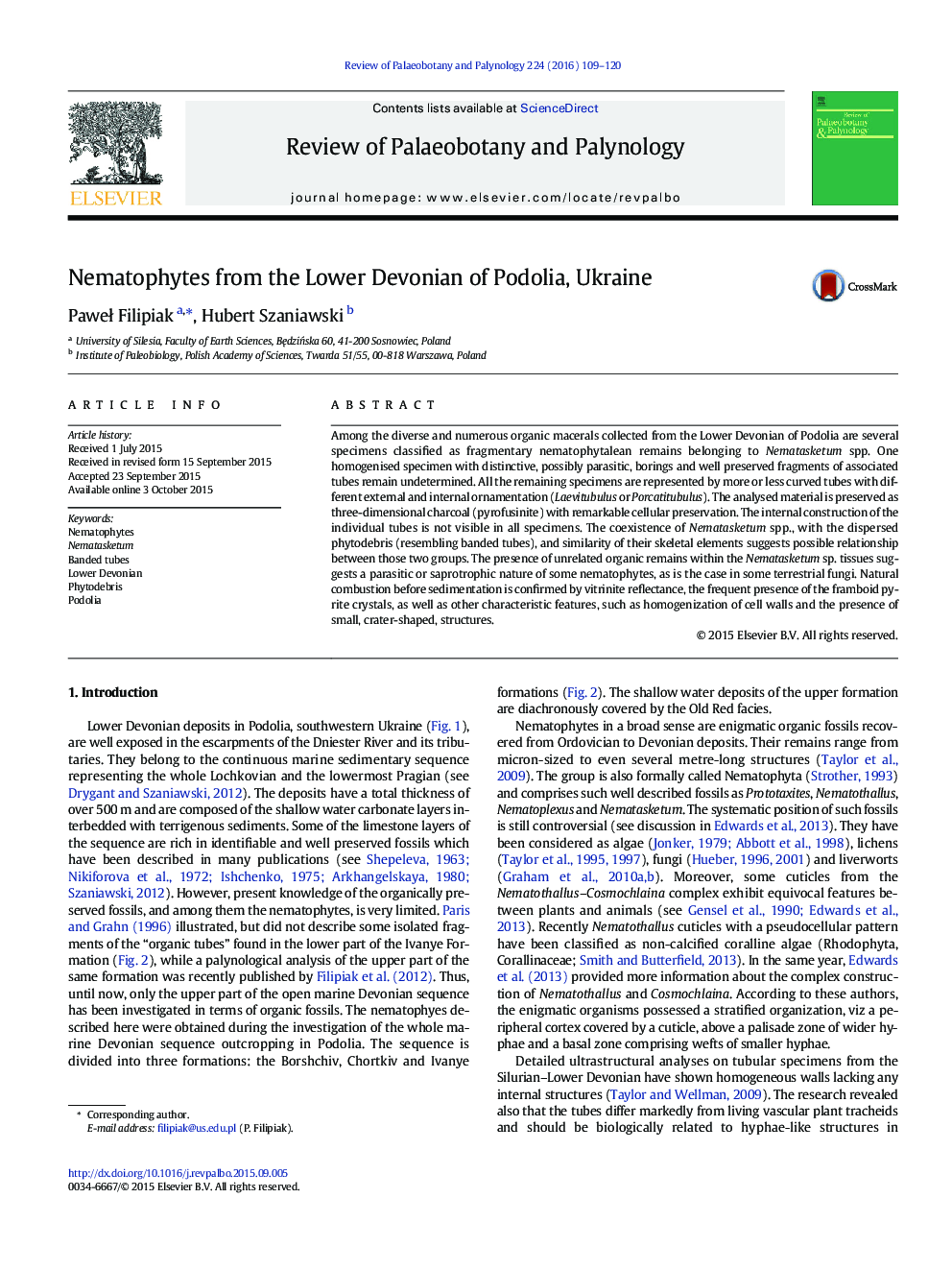| Article ID | Journal | Published Year | Pages | File Type |
|---|---|---|---|---|
| 4750124 | Review of Palaeobotany and Palynology | 2016 | 12 Pages |
Abstract
Among the diverse and numerous organic macerals collected from the Lower Devonian of Podolia are several specimens classified as fragmentary nematophytalean remains belonging to Nematasketum spp. One homogenised specimen with distinctive, possibly parasitic, borings and well preserved fragments of associated tubes remain undetermined. All the remaining specimens are represented by more or less curved tubes with different external and internal ornamentation (Laevitubulus or Porcatitubulus). The analysed material is preserved as three-dimensional charcoal (pyrofusinite) with remarkable cellular preservation. The internal construction of the individual tubes is not visible in all specimens. The coexistence of Nematasketum spp., with the dispersed phytodebris (resembling banded tubes), and similarity of their skeletal elements suggests possible relationship between those two groups. The presence of unrelated organic remains within the Nematasketum sp. tissues suggests a parasitic or saprotrophic nature of some nematophytes, as is the case in some terrestrial fungi. Natural combustion before sedimentation is confirmed by vitrinite reflectance, the frequent presence of the framboid pyrite crystals, as well as other characteristic features, such as homogenization of cell walls and the presence of small, crater-shaped, structures.
Keywords
Related Topics
Physical Sciences and Engineering
Earth and Planetary Sciences
Palaeontology
Authors
PaweÅ Filipiak, Hubert Szaniawski,
